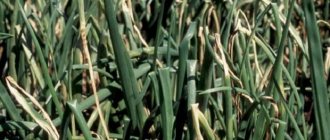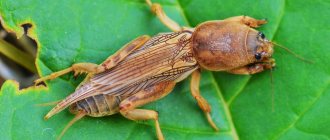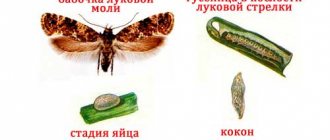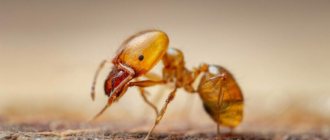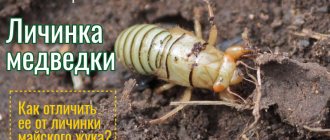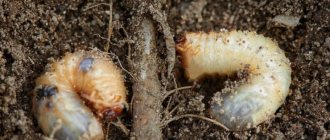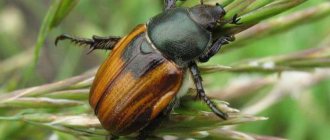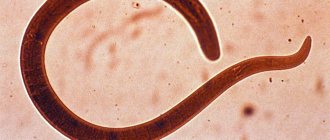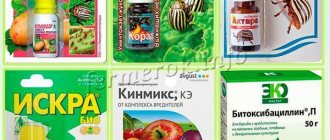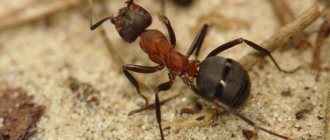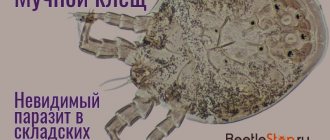The onion nematode affects not only the crop to which its name is attached, but also garlic. The worm settles in the bulbs, lays its offspring in them, which in turn causes deformation of the outer parts of the plant and drying out of the root system. Timely identification of the pest, carrying out preventive and exterminating measures will help cope with the dangerous parasite.
Peculiarities of onion nematode parasitism
The stem nematode has a wide distribution area; parasites are found in all European countries and on the Balkan Islands. It is impossible for the worm to parasitize in the harsh climate of the northern regions of Russia, in Antarctica, as well as in the hot climate of the tropics. The peculiarities of nematode parasitism lie in their taste preference, because the worm chooses only onion and garlic crops for settlement and reproduction of offspring. The pest settles mainly on heavy soils.
Did you know? The nematode releases a toxic substance that leads to blockage of blood vessels and thickening of plant tissue.
Preparing storage before harvest
The onion stem nematode prefers a moist environment; it is recommended to avoid excessive dampness indoors. Before storing vegetables, it is possible to treat the storage with sulfur dioxide (50 g/m3). People are allowed to visit the warehouse 24 hours after processing.
Warehouse preparation measures:
- before planting the crop, pallets and equipment are removed from the premises; if there is access to the street in warm weather, ventilation is carried out for a week;
- wash the equipment in soapy water and dry in sunny weather;
- if there is mold, treat the walls with lime with the addition of copper sulfate.
How to recognize onion nematode
The onion nematode belongs to the representatives of the roundworms of the animal kingdom. The pest lives in the surface layers of the earth, where its population can be over a million individuals per 1 m³, while the nematode plays an important role in the development of the ecosystem.
Worm body structure:
- unsegmented;
- round in cross-section;
- thread-like shape;
- length up to 2 mm;
- color white, cream.
It feeds using a stylet, which is located in the front of the body; the pest uses it to pierce the soft tissues of the plant and suck out the juice. The larvae have a similar structure to adult individuals and differ in microscopic size - up to 0.4 mm.
general characteristics
This small worm (1.5 mm) can cause enormous damage to the cultivation of many crops, especially almost all known varieties of onions, including the beloved onion. As a result of infection by the onion nematode, the vegetable begins to completely rot (both the stem and the root itself), and you may not expect a harvest at all.
Structure and characteristic features
This pest is considered one of the most common. It can be found especially often in regions with a temperate climate, in the central zone of the Russian Federation. Onion nematode can spoil at least 80% of the crop, so timely control methods and prevention are mandatory.
- The worm is round in shape, only a few millimeters long at most. The body of the nematode is in the form of a white thread.
- Ahead we see the stylet - the most important pointed organ of the insect, resembling a needle. With its help, it digs into the plant tissue and sucks out the juices. Seed material is also not spared.
- In the process of feeding on onion juice and fiber, the nematode lays larvae in the tissues, which leads to complete infection of the root crop.
- The female lays at least 200 eggs in just 1 season, which, under favorable conditions for development, leads to the emergence of 6 generations of pests.
- Over time, the spread of nematodes increases and causes huge losses to gardeners and vegetable growers. Dangerous insects remain in the soil even after harvesting. Their number can reach 10 - 15 thousand.
These are quite voracious pests that attack many crops. The onion nematode is just one type.
Main types of nematodes
Leafy. These are microscopic small thread-like worms (1 mm), moving very quickly and managing to infect a huge number of plants in a short time. Among them are strawberry, nephrolepis, chrysanthemum. They feed on leaf sap and insert digestive segments into the tissues. As a result, dots and spots appear on the leaf plate, contributing to drying out, acquiring a brown color and dying.
The plant dies without an important above-ground part. This type of pest overwinters in fallen leaves or in the soil. Stem
Appearance similar to previous description: thin elongated whitish thread-like and round body 1 mm long. It affects the stems, leaves, flowers and buds of plants. Among them: tomatoes and cucumbers, parsnips and parsley, onions and garlic. A diseased plant must be immediately dug up and burned, not left on the ground, but removed immediately so as not to infect other crops. Danger: the nematode releases toxins that lead to blockage of the plant’s vascular system. Root. Insects up to several millimeters in volume. The place of their activity is the root system. In the affected areas, thickenings (galls) form on the roots. The root part of the crop begins to wither, as if there are not enough nutrients and watering. As a result, the entire plant dies. Garden flowers are most often affected. And infection and death of the root system is often noticed only after digging up the dead crop.
Nuances of life
Nematodes infect stems and leaf blades, live in seeds; parasitism in the root system occurs rarely. The pest invades the crop through stomata and multiplies in living tissues. The spread of the pest occurs through active movement in the ground or when using untreated tools for working in the garden.
Did you know? The onion nematode is very mobile, it is able to cover a distance of 2 m to the top layers of soil. On average, the pest spends 3 hours to overcome 10 cm.
The life cycle is a maximum of 75 days, the female is capable of laying 10 eggs every day. The most favorable conditions for oviposition are temperatures from +5°C to +18°C. The larvae experience 4 stages of development, each of which lasts from 3 to 5 days. At the last stage of development, the larvae are able to independently crawl out of dead crops in search of new hosts.
The total duration of development of larvae in the host plant is 23 days; during the growing season, 4 generations of nematodes are born, which hatch from ovipositions one after another with an interval of 4 weeks. Worms have the ability to survive in the soil for up to 1.5 years at temperatures from +3°C to -5°C without a host plant. The pest continues to live in dry vegetation residues for up to 12 months.
Downy mildew (peronospora)
Downy mildew (peronospora)
The causative agent of the disease, the fungus Peronospora, affects onions during the growing season. The disease is especially dangerous for onion seeds in wet years.
The fungus overwinters in the form of a mycelium in the bulbs, without outwardly manifesting itself in any way. Can overwinter in plant debris. The mushroom enters the garden with infected bulbs planted in the ground. During the first 20-30 days, plants develop from infected bulbs without any external manifestations of the disease. However, along with the onion, the mycelium also grows. It penetrates into the leaves through the intercellular spaces. The disease appears on the leaves in the form of round, blurry yellowish spots, on which, in wet weather, a gray-violet coating of summer fungal spores appears. Sick plants are stunted, wilt, turn yellow, and may die. In dry weather, the development of the disease stops.
Wind and rain disperse the spores, infecting healthy plants. Once on a healthy plant, the spore grows into a mycelium, which penetrates into the tissue of a healthy leaf through stomata. After 10-15 days, a yellow oval spot with a coating of spores forms on the leaf at the site where the mycelium invades. Diseased leaves dry out. Later, the mycelium penetrates from the leaves into the bulb, where it will overwinter.
On onion seeds, the fungus infects the shoots, which turn yellow and break. In this case, the seeds on the inflorescences are either not formed at all or are formed puny. Perennial types of onions (batun, leek, chives) are a constant source of spore formation. The mycelium overwinters in their roots.
Measures to combat downy mildew (peronospora) on onions and garlic
- Rotation of crops: onions should return to their original place after 3-4 years. Planting onions in open areas well blown by the wind.
- If possible, remove nigella crops from other onion crops.
- Crops of perennial onion species should be isolated as much as possible from other onion plantings.
- Planting onions with bulbs not infected with peronospora.
- Removing diseased plants or diseased leaves during the growing season.
- Spraying seed plants and other onion plantings, except for onion plantings, with 1% Bordeaux mixture, oxychome or copper oxychloride. The period of spraying is at the first manifestation of the disease.
- Disinfection of planting material in one of the following ways: a) heating onion sets, turnips, samples obtained from infected crops at a temperature of +40... +43° C for 16 hours or at a temperature of +35... +37° C for 7 days . It is better to warm up the sets in the spring 12-14 days before planting; b) warm up the planting material at a temperature of +40° C for 8 hours, and large bulbs for 16 hours. In this case, the mycelium in the bulbs dies.
- Drying the onions in the garden until the leaves are completely dry and dry covering scales form on the bulbs. Removal of crop residues.
Symptoms of onion nematode infection
Infected plants generally have damage to the leaf blades, which thicken and curl, and then become dull and gradually turn yellow. Inside, the fruits become soft, losing their elasticity and tissue integrity.
Important! The minimum density of soil nematode infection is 20 individuals per 1 kg; with a higher ratio, onion cultivation is not recommended.
Symptoms of onion crop infection:
- The leaf blades turn yellow, dry out, and cracks appear.
- Ripe vegetables are small and deformed. The core of the fruit becomes loose, acquires a brown tint, and has a rotten smell.
- Infection of the crop by worms at the initial stages of growth and development leads to improper formation of fruits, which is manifested by swelling of the internal scales.
- Infestation of plants by parasites at the final stage of growth leads to the formation of whitish spots on the scales of the vegetable.
- The presence of a rotten smell from the beds during watering and in rainy weather.
Conclusion
The onion nematode is a small parasite that is practically invisible to the naked eye. The danger of this roundworm is that it can remain in a state of suspended animation for a long time both in the soil and in the seed. Therefore, special attention should be paid to preventive measures that indicate how to deal with onion nematode. This way you will preserve not only a high-quality harvest, but also the health of the soil in your garden plot.
If infection with nematodes has already occurred, it is recommended to immediately use special effective chemicals. They allow you to completely destroy all individuals that have infected root crops.
The harmfulness of the parasite
The most dangerous pests of garden crops are small nematode worms. Parasites are distinguished by their gluttony, eating the crop from stem to rhizome. The result of worm pests in the garden is:
- poor plant germination,
- stem deformation;
- development slowdown;
- poor harvest or lack thereof.
Parasitism by worms leads to the development of fungal infections and putrefactive diseases.
The pest easily moves from an infected vegetable to a healthy one, so you should carefully sort the fruits before placing them in storage. Important! If the storage rules for onion crops are not followed,
nematodes continue to grow and develop.
Signs of defeat
It is easy to recognize onion infestation by parasites by the appearance of the vegetables:
- stem bending;
- swollen leaves;
- loose bulbs;
- in the later stages of the lesion - drooping, drying foliage, rotten bottom.
If the pest has only recently settled in the bulb, then the diseased plant is difficult to distinguish “by eye” from a healthy one. Only white spots that appear on the bulb can hint at a problem; later they turn gray-brown. Then it is better to cut the onion and look at its scales.
If they become fleshy and thickened, then there is an onion nematode.
The parasite, violating the integrity of the bulb, makes it susceptible to the penetration of fungi and bacteria; plants infected with the onion nematode become open to other dangerous pests, for example, hoverflies and mites.
Ways to combat a dangerous pest
Pest control is carried out in the following ways:
- compliance with crop rotation;
- careful selection of material for sowing;
- use of insecticides;
- traditional methods.
Compliance with crop rotation involves planting an onion crop in a new place every year, which will avoid infecting the crop with parasites. If nematodes have been detected in the soil, then growing onions in this area is prohibited for 4 years due to the ability of the parasites to enter into suspended animation for a period of up to 2-3 years and patiently wait for the host plant.
The planting material must be healthy and treated in a 1% potassium permanganate solution for 8 hours immediately before planting in the ground. Dry treatment for disinfection is effective, which consists of heating the seed material by exposure to direct sunlight.
Chemicals
The use of chemicals in the fight against nematodes is the most effective method. To achieve the desired effect, it is necessary to use a nematicide substance, which is part of the chemicals.
Important! When treating with hot water, do not exceed the temperature limit of +55°C, so as not to harm the plant.
There are a number of drugs that affect the respiratory tract of insects:
- "Methyl bromide";
- "Nemagon."
Contact drugs that penetrate the skin:
- "Karbofos";
- "Phosfamide."
Before using insecticides, you should read their instructions. The method of using chemicals is to irrigate infected plants. Manipulations must be carried out in dry, windless weather in the morning or evening.
Traditional methods
There are many ways to get rid of nematodes in your area without using chemicals. The most common is soil treatment with hot water:
- It is necessary to dig up infected crops.
- Pour water heated to +55°C into prepared containers.
- The plant is disinfected within 5 minutes.
Find out more about onion diseases.
An infusion of marigolds is effective in combating the parasite:
- Pour half a kilogram of crushed marigold flowers into 5 liters of boiling water.
- Leave for 48 hours.
- Strain through cheesecloth.
- Use the infusion in an amount of 200 g for each bed.
Nasturtium infusion:
- Pour 5 liters of chopped nasturtium in the amount of 300 g.
- Leave for 24 hours.
- Strain, process 3 times with an interval of 7 days, 300 g per well.
Preventive measures
One of the most reliable ways to protect crops from infection is prevention. Regular use of preventive measures reduces the risk of onion nematode invasion to a minimum.
The following methods are used as prevention:
- regularly changing the place where the crop is planted - alternating plants, among other things, improves soil fertility;
- treatment of seed material before planting with high temperature or chemicals;
- destruction of plant residues after harvesting - special attention is paid to the destruction of infected plants and weeds;
- regular application of inorganic fertilizers.
Prevention measures
Preventive measures:
- Disinfection of equipment used when cultivating soil on the site.
- Removing weeds, loosening the soil.
- Careful selection and disinfection of planting material.
- Maintaining crop rotation.
- Cleaning the site after harvesting, which consists of burning all plant residues of vegetables and weeds.
You will be interested to know how and with what to process onions before planting.
The onion nematode is a microscopic parasite that is extremely voracious and vital, making it difficult to eradicate from the soil. To avoid problems with the pest, preventive measures should be carried out annually, as well as monitor the crop rotation of garden crops.
Onion varieties resistant to pest type
There are no onion varieties that are completely resistant to pest attacks. However, there are a number of onion representatives that are least susceptible to nematodes. These include the Bamberger variety.
The onion nematode is a dangerous parasite for the entire area; if it appears on your acres, it will not be easy to get rid of it. The best remedy is prevention. But, if you couldn’t keep track and the named guest is on the doorstep, don’t get lost, chemical, biological preparations, as well as time-tested folk remedies are at your fingertips.
Notes[edit | edit code]
- ↑ 1234
Nematodes / G. A. Platonova // Morshin - Nikish. - M.: Soviet Encyclopedia, 1974. - (Great Soviet Encyclopedia: [in 30 volumes] / chief editor A. M. Prokhorov; 1969-1978, vol. 17). - ↑ 1 2 3 4 Hodda, Mike.
Phylum Nematoda Cobb 1932 (English) // Zootaxa. - 2011. - No. 3148. - P. 63-95. - ↑ 1 2 Lambshead PJD
Recent developments in marine benthic biodiversity research // Oceanis.
- 1993. - Vol. 19
(6). - P. 5-24. - ↑ Nematoda from the terrestrial deep subsurface of South Africa: Nature: Nature Publishing Group (unspecified)
. Access date: June 13, 2011. Archived September 20, 2011. - ↑ 1234
Collier's Encyclopedia, 2000. - ↑ 12
Nematodes // Biology. Modern illustrated encyclopedia / Ch. ed. A. P. Gorkin. - M.: Rosman, 2006. - 560 p. — (Modern illustrated encyclopedia). — ISBN 5-353-02413-3. - ↑ Poinar GO et al.
Earliest fossil nematode (Mermitidae) in Cretaceous Lebanese amber // Fundam. appl. Nemawl. - 1994. - No. 475-477. - ↑ Gubanov N.M.
Giant nematode from the placenta of cetaceans -
Placentonema gigantissima
nov. gen., nov. sp // Reports of the USSR Academy of Sciences. - 1951. - T. 77, No. 6. - P. 1123-1125. Archived from the original on April 12, 2022. - ↑ 123
Biological encyclopedic dictionary, 1986. - ↑ Nematodes gain experience as they grow - Neuroscience (unspecified)
.
Portal “Attic: science, technology, future”
. chrdk.ru. Access date: January 10, 2022. - ↑ Smith H.
Sperm motility and MSP // WormBook. - 2006. - doi:10.1895/wormbook.1.68.1. - ↑ Yushin V.V., Malakhov V.V.
Origin of nematode spermatozoa: progenesis at the cellular level // Biology of the sea. - 2014. - No. 40. - P. 83–94. - ↑ 1 2 3
BG Chitwood, 1957, Phylum name.
(undefined)
. Access date: February 22, 2011. Archived November 29, 2012. - ↑ 123
Malakhov, 1986. - ↑ Key to parasitic nematodes. T. 1. Spirurates and filariates / Ed. K.I. Scriabin. - M.-L.: Publishing House of the USSR Academy of Sciences, 1949. - 520 p. — P. 243.
- ↑ Zoology of invertebrates. T. 1: From protozoa to mollusks and arthropods / Ed. V. Westheide and R. Rieger. - M.: KMK, 2008. - iv + 512 p. — ISBN 978-5-87317-491-1.
- ↑ Margulis L., Chapman MJ.
Kingdoms & Domains: An Illustrated Guide to the Phyla of Life on Earth. 4th ed. - Amsterdam: Academic Press, 2009. - 659 p. — ISBN 978-0-12-373621-5. - P. 274. - ↑ Stichosomida (English). ucdavis.edu. Date accessed: August 7, 2017.
- ↑ 1 2 Nematodes
- article from the Great Soviet Encyclopedia. - ↑ Nematodes // 1. Small medical encyclopedia. — Medical encyclopedia. 1991–96 2. First aid. — Great Russian Encyclopedia. 1994 3. Encyclopedic Dictionary of Medical Terms. — Soviet encyclopedia. - 1982-1984 (Russian). - M.
- ↑ Nematode plant diseases
- article from the Great Soviet Encyclopedia. Sveshnikova N. M.. - ↑ 1 2 Sharova I. Kh.
Zoology of invertebrates.
Taxonomy and systematics[edit | edit code]
Eophasma jurasicum
, a fossilized nematode
The group was first identified by Carl Asmund Rudolphi in 1808[13] under the name Nematoidea
(Ancient Greek νῆμα,
gen.
νήματος - “thread” and εἶδoς - “view”).
The group was later classified successively as the family Nematodes
by Burmistrom in 1837[13] and as the order
Nematoda
by C. M. Deesing in 1861[13].
The taxonomic status and systematic position of some groups of nematodes (classes, subclasses, orders) is debated[2][14]. For example, according to some old classifications, the largest class Chromadorea was accepted in a narrow scope (without Ascaridida, Spirurida, Tylenchida) and included in the rank of the order Chromadorida Chitwood, 1933 in the combined paraphyletic subclass of nematodes Adenophorea
, or aphasmidia (Adenophorea, Aphasmidia Chitwood et Chitwood, 1933)[15]. For the first time, the division of nematodes into two subclasses was substantiated in the 1930s by B. Chitwood (Chitwood B., 1933, 1937). However, the name Phasmidia Chitwood et Chitwood, 1933 he proposed turned out to be already occupied by an older, similar name of one of the insect orders. In most works of the 20th century, nematodologists used the following subclass names[14]:
- Subclass Adenophorea Linstow, 1905 (or Aphasmidia Chitwood et Chitwood, 1933) with the orders Chromadorida (later divided into the orders Araeolaimida, Desmodorida, Desmoscolecida, Monhysterida) and Enoplida (Dorylaimida, Mermithida, Muspiceida, Trichocephalida)
- Subclass Secernentea Linstow, 1905 (or Phasmidia Chitwood et Chitwood, 1933) initially with only two orders Rhabditida and Spirurida (these were then split into Aphelenchida, Ascaridida, Camallanida, Diplogasterida, Rhabdiasida, Rhabditida, Spirurida, Strongylida, Tylenchida)
The artificiality of this classical view of the systematics of nematodes (especially Adenophorea) was increasingly confirmed by new anatomical and molecular genetic studies. In some later systems, where all nematodes are considered at the rank of a class, 3 subclasses are distinguished (Malakhov, 1986)[14].
- Subclass Enoplea (Dorylaimida, Enoplida, Marimermithida, Mermithida, Mononchida, Trichocephalida)
- Subclass Chromadoria (Araeolaimida, Chromadorida, Desmoscolecida, Desmodorida, Monhysterida, Plectida)
- Subclass Rhabditia (Ascaridida, Oxyurida, Rhabditida, Spirurida, Strongylida, Tylenchida)
Modern classification[edit | edit code]
As of 2011, the nematode phylum includes 3 classes, 31 orders, 267 families, 2829 genera and 24,783 species, with fossil taxa represented in 2 genera by 10 species; there are also 7 genera and 7 species known only in the fossil state[2] (earlier estimates ranged from 15[16] to 80 thousand[17], and the real diversity of nematodes - taking into account the prospects for describing new species - is estimated at a million species[3 ]).
The type includes three classes and about 30 units[2]:
- Phylum Nematoda
Class Chromadorea Order Benthimermithida - Order Chromadorida
- Order Desmodorida
- Order Desmoscolecida
- Order Diplogasterida
- Order Drilonematida
- Order Leptolaimida
- Order Monhysterida (incl. Araeolaimida)
- Order Panagrolaimida (incl. Tylenchina)
- Order Plectida
- Order Rhabditida, includes most of the large parasites of vertebrates, as well as the model nematode Caenorhabditis elegans
- Order Selachinematida
- Order Spirurida (incl. Ascaridina)
- Order Teratocephalida
- Order Alaimida (or suborder Alaimina within the order Enoplida)
- Order Bathyodontida (or suborder Bathyodontina and Bathyodontoidea in the order Mononchida)
What to do if a worm eats an onion, how to treat it, folk remedies
The benefits of onions for the human body are undeniable. The vegetable has a number of useful substances.
People have been growing this crop in their gardens for a long time. This is an unpretentious plant that is resistant to various fungi. The onion fly and its larvae cause a lot of trouble to gardeners. When a worm eats an onion, there are several ways to treat it: folk remedies and industrial preparations can provide a positive result.
Trichodermin
At the stage of detecting onion worms, you cannot hesitate. In this case, it is advisable to use the drug Trichodermin.
Before use, you should carefully study the instructions and recommendations from the manufacturer on how to get rid of the pest. The solution is prepared in the following proportions: take 3 liters of water per 3 g of substance.
The prepared mixture must be treated with the plants. Watering is not recommended immediately after spraying, so as not to wash off the active product from the feather.
After 10 days, the culture is sprayed again. If larvae reappear, additional treatment is necessary.
Metronidazole
This medicine in tablets can be purchased at the pharmacy. The product has antimicrobial and antibacterial effects. Before use, it is worth learning how to properly prepare a solution for processing the garden.
The drug is effective against onion flies, nematodes, and a number of similar pests. Removing insects is sometimes difficult; various antiparasitic methods and control methods are used for these purposes. Metronidazole has proven itself as an effective treatment for various vegetable crops.
A solution is prepared for spraying. 4 tablets are dissolved in 10 liters of water. The beds are watered with liquid. The solution can also be sprayed. If the damage to plants is large-scale, it is recommended to repeat the procedure after 10-15 days.
Ammonia
Ammonia is widely used for processing onion heads. Its pungent smell repels insects from tubers and foliage.
It is not difficult to prepare the solution. To do this, you should prepare 10 liters of settled water and dilute 60 ml of ammonia in it.
Repeated treatment can be carried out no earlier than a month later. Ammonia tends to erode and be washed out of the soil, so you can carry out the procedure 2 times per season.
Dandelion decoction
Dandelion can permanently remove harmful larvae and insects from the garden, but first you need to properly make a decoction of it.
Preparation will take several days, since the solution must infuse for a long time. For the tincture, you need to take 200 g of finely chopped dandelion root and pour 1 liter of boiling water. The mixture is infused for exactly 2 days. Then the solution is brought to a volume of 10 liters by adding water to it. Spraying with infusions gives excellent results if used in conjunction with salt solutions.
Step-by-step instruction
The fight against armyworms has a number of characteristic features that need to be taken into account depending on the age of the individuals.
How to fight butterflies?
HELP: If the above methods do not bring the desired result, it is necessary to use chemical insecticides.
Adult cutworms lay larvae on plants, which soon begin to devour leaves and young shoots. Basic methods of controlling butterflies:
- Use of pheromone traps. These devices show the gardener and gardener the exact time of appearance of butterflies and, accordingly, caterpillars;
- Fighting butterflies with the help of their natural enemies - bracon and trichogramma;
- Using proven folk recipes;
- Digging up soil in the fall, since cutworms overwinter in the soil;
- Biological products against insects.
The easiest way to protect cabbage from pests: the gnawing cutworm:
How to get rid of armyworm caterpillars?
The fight against armyworm caterpillars has its own characteristics. The main methods include:
- Deep digging of the soil in the spring in order to reduce the number of overwintered armyworms;
- Elimination of weeds - these plants serve as the main basis for feeding the larvae;
- Manual collection of the first larvae and caterpillars;
- Use of folk remedies;
- Use of biological products;
- Treatment of plants with chemical insecticides;
- Autumn digging of soil to destroy individuals that remain for the winter.
